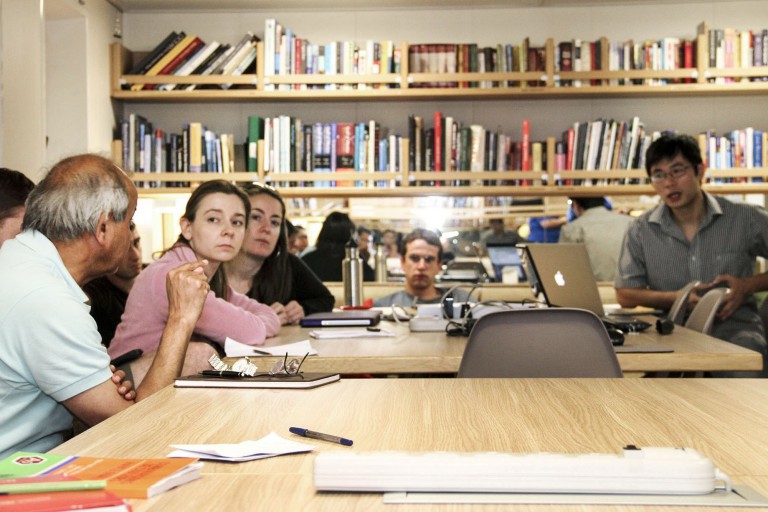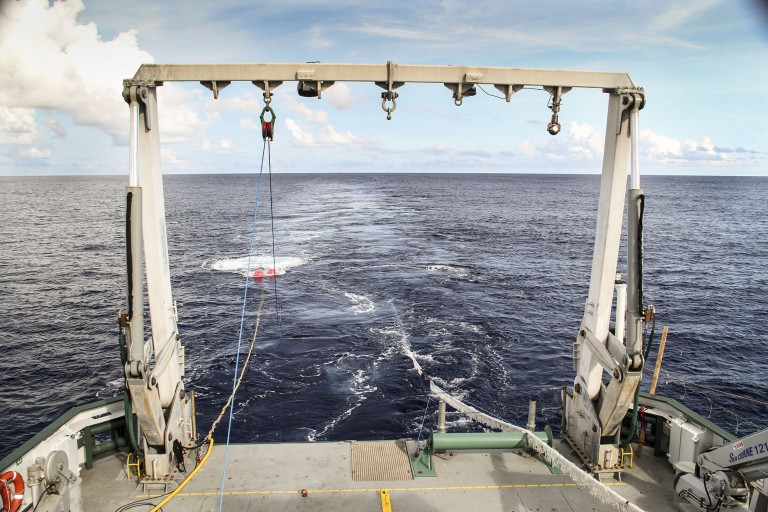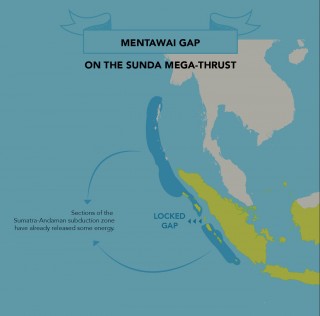
In our previous post Dr. Satish Singh, co-leader of the MEGATERA expedition shared his personal experience on the 2004 Indian Ocean earthquake and the tsunami that followed. “I was shocked by it. I felt that as a marine geophysicist I was best positioned to understand what happened. Most earthquakes that seismologists talk about happen on land, but if something happens at sea you can’t always go there. The only way to really get to the heart of it is to take the marine geophysical tools and immerse, that was my drive and what brings me on Falkor now.”
But going to the ocean is no simple mission. “It’s more challenging and exciting offshore – I love to do science at sea. You need to plan for everything from getting the ship, to assembling the team, and prepping the equipment. It really is like going to outer space, because once you’re there you can’t come back, you have to plan for everything beforehand.”

The big one
Dr. Singh hopes the science conducted onboard of R/V Falkor will contribute to the preparation in Sumatra and countries around the Indian Ocean for the next big earthquake. He concedes that when it comes to tsunamis and how they are generated, knowledge is still very limited.
This expedition has been designed to try to answer some of the most pressing questions: “It’s about trying to understand how earthquakes can generate tsunamis. – that’s the bottom line. We know there are earthquakes in this area, some big, some small, but the key problem is linking the tsunamis and earthquakes. There is potential for a big quake and a big tsunami, or a big quake with no tsunami, or even a small quake with a big tsunami. There is no direct link between them.”

Expect the unexpected
 In 2008 Dr. Singh embarked on an expedition to research the Sunda mega-thrust, but, the ocean had a different idea. Strong currents and winds made it impossible for the small vessel to cross around the Mentawai Islands and the crew was forced to use the islands for protection, and hide for three weeks. This kept the team in an area directly opposite to the one they intended to research. Dr. Singh decided they would not lose anything by conducting research surveys while they waited out the storm, and low and behold, a big discovery was made.
In 2008 Dr. Singh embarked on an expedition to research the Sunda mega-thrust, but, the ocean had a different idea. Strong currents and winds made it impossible for the small vessel to cross around the Mentawai Islands and the crew was forced to use the islands for protection, and hide for three weeks. This kept the team in an area directly opposite to the one they intended to research. Dr. Singh decided they would not lose anything by conducting research surveys while they waited out the storm, and low and behold, a big discovery was made.
“We knew that there was a fault in the sea between Sumatra and the Mentawai’s, but we did not know that it was right near Sumatra Island. This fault could rupture and produce a big earthquake and a tsunami. From this discovery, we were able to predict that most tsunamis in the area are due to this fault and better understand the area.”
Learning from this experience, Singh is now completely open to what the Indian Ocean decides to reveal. “We came in 2008 for the first time and now I’m coming back with a lot more data and familiarity. I think we know what to expect, but science is not about what you’re expecting, it is about what you don’t expect.” Dr. Singh looks up with a smile, what he really means, is that he hopes to find some surprises along the way.

